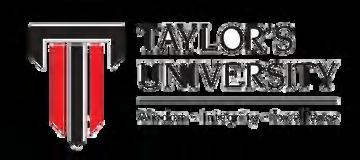









ASSIGNMENT01
LEGISLATIVEAND REGULATIVE DIMENSIONOF INTERIORDESIGN

ASSIGNMENT02
KNOWLEDGEEXCHANGE FORUM

ASSIGNMENT03 FUTUREPRACTICES


ISSUE LINK CONCLUSION

ASSIGNMENT04 BY-LAWAPPLICATION ANDPREREQUISITES FORBUILDINGPLAN SUBMISSION











ASSIGNMENT01
LEGISLATIVEAND REGULATIVE DIMENSIONOF INTERIORDESIGN

ASSIGNMENT02
KNOWLEDGEEXCHANGE FORUM

ASSIGNMENT03 FUTUREPRACTICES


ISSUE LINK CONCLUSION

ASSIGNMENT04 BY-LAWAPPLICATION ANDPREREQUISITES FORBUILDINGPLAN SUBMISSION


Future interior designers must understand key contractual, professional, and legal terms to communicate effectively. This assignment introduces professional conduct standards for interior designers registered with the Board of Architects Malaysia. Students should refer to documents like the Architects Act 1967, Architects Rules 1996, Uniform Building By-Laws 1984, and the PAM/MIID Contract.













https://youtu.be/ewudrCvwGEw











By completing this assignment, I have gained a deeper understanding of the registration framework for interiordesignersinMalaysia,includingthekeyrequirementsofIDRandIDCP.
I learned that IDR registration focuses on individuals, requiring candidates to have the relevant academic background,industry-recognizedqualifications,andatleasttwoyearsofworkexperience.Thisensuresthe professional competence of practitioners and highlights the importance of LAM and MIID accreditation. Meanwhile, IDCP registration emphasizes the legitimacy and compliance of consultancy practices, ensuring businessesoperateaccordingtoindustrystandards.
Through this study, I realized the vital role of the registration system in enhancing professionalism, protectingclientinterests,andmaintaininghigh-qualityserviceswithintheindustry.Ithasalsoclarifiedthe qualifications and responsibilities required to become an interior designer and inspired me to pursue higher standardsofprofessionalismandintegrityinmycareerdevelopment.


This task promotes democratic exchanges through online forums, enabling every student to share their voice and engage in professional and academic discussions with peers. As part of Professional Development Week (PDW) in Week 8, students must attend at least 6 seminars (TBC) and summarize their reflections on each seminar, combining personal insights and selected materials (text, images, screenshots).














Thismissionaimstoencouragemoredemocraticcommunicationandensurewecanallexpressourviewsand be heard in online forums. Through interaction with peers and discussion and understanding of various laws andregulations,notonlypersonalgrowthcanbeachieved,butacademicprogresscanalsobeachieved.
This PDW has multiple themes, providing us with comprehensive career development and personal growth support. By supporting local design, it emphasizes protecting cultural characteristics and promoting the creative economy; financial knowledge explains how graduates can effectively manage finances and plan for thefuture;LinkedInnetworkdevelopmentskillshelpparticipantsdemonstratetheirpersonalstrengthsand establish professional connections; Unleashing Potential guides everyone to explore personal interests and career direction; at the same time, the challenges and opportunities of the design industry provide an indepth discussion of the current situation and coping strategies of the industry. These contents provide us withpracticalskillsandnewideas,layingasolidfoundationforourfuturecareerdevelopment.





This task invites students to reimagine the ideal architectural practice of the future by addressing challenges faced by architects and proposing innovative solutions and business models. Using insights from Project 1, students will critically evaluate data to define their vision and mission for a future design company. Through reflection and applying effective business practices, students will clarify their goals within a chosen business context.











https://youtu.be/Qseot97YL5I



By completing this assignment, I gained a deeper understanding of the sole proprietorship business model within Malaysia's interior design industry. As a business structure entirely owned and managed by an individual, sole proprietorships offer advantages such as low startup costs, simple management, and a high degree of flexibility and autonomy. This model allows owners to make independent decisions and schedule work according to their own needs. However, I also realized that while setting up a sole proprietorship is straightforward,runninganinteriordesigncompanyisfarfromeasy.
During the assignment, we explored various expenses that a company might face, including project costs, employee salaries, marketing expenses, and more. This helped me understand that behind the freedom and flexibility lies the significant responsibility of sole proprietors, who must bear the full weight of financial andbusinessdecisions.
Through this learning experience, I discovered that operating an interior design company requires not only design skills but also strong business acumen and management abilities. To succeed in this industry, I will need to develop a more comprehensive skill set, including budgeting, business planning, and effective communicationwithclientsandteams.


This assignment integrates knowledge from Project 1 into individual AIAD2 projects. Students must create an informative report illustrating regulatory, legislative, and technical provisions using dimensions, drawings (including isometrics), and materials. The focus is on assessing students' ability to apply this knowledge to their final AIAD2 project.
The task serves as a working paper to guide compliance with laws without altering designs due to time constraints. Students identify non-compliance by marking (x) and propose rectifications, ensuring the design meets legal standards before submission to the Local Authority. This process is crucial for achieving regulatory compliance.







Through the final assignment, I gained a deeper understanding of building regulations and successfully integrated the knowledge from Project 1 into my AIAD2 project. This not only enhanced my ability to identifyandsolveproblemsbutalsogavemeacomprehensivegraspoftheUniformBuildingBy-Laws(UBBL) requirements.
Inthefinalproject,IensuredthatmydesigncompliedwithUBBLstandards,focusingonkeyaspectssuch as spatial safety, functionality, lighting, ventilation, fire safety, and accessibility. This experience significantlyimprovedmyunderstandingofregulationsandmypracticalskillsincompliantdesign,whilealso strengtheningmyprofessionalexpertise,layingasolidfoundationforfuturedesignpractices.



HTTPS://ISSUU.COM/XIAOXIAO626/DOCS/











TheProfessionalPracticemodulehasgreatlyenhancedmyunderstandingofhowtoapplyskills effectively in real-world work scenarios. Through studying the Uniform Building By-Laws (UBBL), I learned how to integrate essential fire safety measures, such as alarms, sprinkler systems, and smoke detectors, to ensure my designs meet safety standards. Additionally, I gained valuable insights into incorporating business practices for planning and managing an interior design company, which provided a solid foundation for understanding the operational aspectsoftheprofession.
Participating in hands-on workshops and industry-focused lectures offered me a clearer perspective on my career aspirations and professional goals. These experiences not only deepened my knowledge of industry expectations but also equipped me with the tools to navigate the challenges of transitioning into the workplace after graduation. Overall, this module has been instrumental in preparing me for the next steps in my journey as a professionalinteriordesigner.





